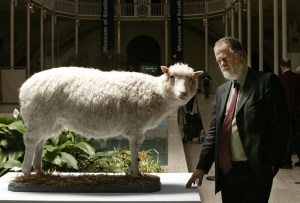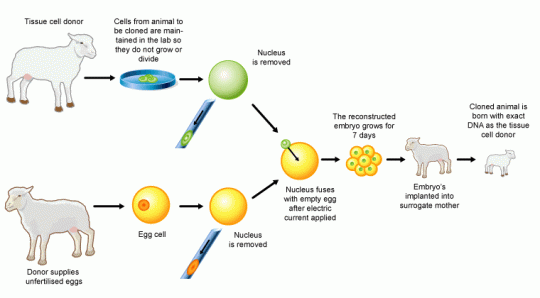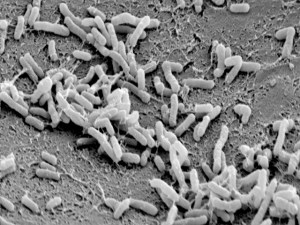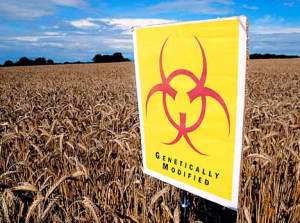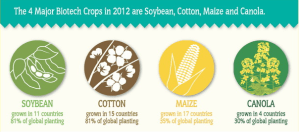Category: Section 5: Use of Biological Resources
Bacteria and Yoghurt: Grade 9 understanding for IGCSE Biology 5.7
Biology is a great subject to teach: you get to introduce young minds to the wonders of the natural world, to show them how evolution has been able to take an ancient planet with a few self-replicating molecules in some deep sea vent and end up today with perhaps 100 million different species all occupying unique niches in an ever changing ecosystem. You can take students onto a journey into the cell so that they understand and appreciate the complexities of DNA as a coding molecule and how proteins have evolved to carry out the myriad processes of cellular biology.
And you also get to teach the role of bacteria in yoghurt making. This will be a short post.
This is yoghurt. It is made from milk.

Milk contains a sugar, lactose. Yoghurt is made when a culture of Lactobacillus bacteria is added to the milk. The two most important bacterial species involved in yoghurt making are called Lactobacillus bulgaricus and Streptococcus thermophilus (although only the former is mentioned in the specification). Perhaps they didn’t want the excitement levels to get too high….?
Lactobacillus use the lactose in the milk as a respiratory substrate producing lactic acid as a waste product. This lactic acid gives the yoghurt its bitter taste as well as lowering the pH so that the yoghurt takes on its gel like appearance.
Respiration in Lactobacillus:
Lactose ——> Lactic Acid
That’s the limit of my knowledge and interest in this topic: hope it helps…….
Yeast and Brewing: Grade 9 Understanding for IGCSE Biology 5.5
Humans first discovered how to make beer around 7000 years ago and brewing has been an integral part of human civilisations ever since. Yeasts are a family of single celled fungi that can use the sugars in fruits and seeds as a source of energy for respiration. Yeast can respire both aerobically and anaerobically and you should know the equations for these two processes.
Aerobic respiration
Glucose + Oxygen ——-> Carbon Dioxide + Water
Anaerobic respiration (aka Fermentation)
Glucose ——> Ethanol + Carbon Dioxide

So when yeasts respire anaerobically they produce ethanol and carbon dioxide as the waste products. Ethanol is also known as alcohol and humans learned a long time ago that alcohol is a drug that changes the way you think or feel, often in a pleasurable way in moderate doses. Making drinks that were alcoholic also helped to kill potentially harmful bacteria and other pathogens in pre-industrial times when drinking water was not readily available.
If you add yeast to a source of sugar in anaerobic conditions, the yeast cells will ferment the sugars into alcohol and carbon dioxide. In order to make beer, the source of sugar comes from germinating barley seeds. Hops (dried flowers of a hedgerow plant) are added later to give the bitter flavour beer drinkers seem to like…..
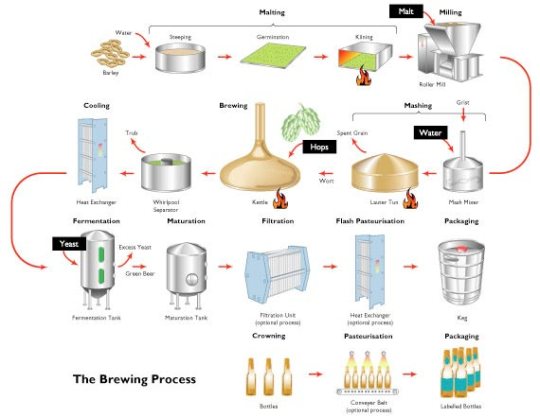
The flow diagram above shows the stages in making beer. I can’t imagine you would be expected to know the details. Any question on this topic would presumably focus on the anaerobic respiration of the yeast rather than the details of the brewing process.
In case anyone is interested, I am not a huge fan of beer although I can occasionally be forced by peer pressure into consuming one or two. My preferred fermentation reactions happen not in the copper tuns of English breweries but in the beautiful Northern Rhone valley in France, where skilled wine-makers can take Syrah grapes grown under the influence of the cooling mistral wind and turn them into beautiful Cote Rotie or Hermitage. Now there’s a happy thought for a cold November evening……..


Fertilisers: Grade 9 understanding for IGCSE Biology 5.3
Fertilisers is the term used for “chemicals or natural substances added to soil to promote the growth of plants”.
Key point: in spite of what it says on this packet of fertiliser, fertilisers are not food for plants. (Just adding this photo to the post makes me feel slightly sick inside: how could MiracleGro be so happy to confuse generations of people who visit garden centres…..?)

Plants are autotrophic: they make their own food molecules in the amazing process of photosynthesis. Plants use carbon dioxide from the air plus water from their roots to produce a whole range of organic molecules powered by the energy from sunlight.
But remember that in order to make amino acids, proteins and DNA plants will also need a source of nitrogen atoms. Carbon dioxide and water do not contain any nitrogen atoms and yet nitrogen is needed for building amino acids, proteins and DNA.
Where do plants get this nitrogen from?
Well the key idea is that they do not take it from the air. Nitrogen gas in the air is very un-reactive and cannot be fixed in the plant. But the soil contains nitrate ions and plants can absorb these by active transport in their root hair cells. Nitrate ions are transported up the plant in the xylem and can be used to make amino acids etc. in the leaf cells.
Nitrates are not the only mineral ions taken up by plants in their roots. Plants absorb phosphate (for making DNA), magnesium (for making chlorophyll), potassium (for a wider variety of cellular processes) amongst many others.
So fertilisers are a way of replenishing the concentration of these essential minerals in the soil. More fertiliser, more minerals, faster plant growth as more proteins/DNA etc. can be made in the leaves…. Simples!

The commonest type of inorganic (chemical) fertiliser are called NPK fertilisers. (Nitrogen, Phosphate, Potassium). These can be bought in handy 50kg sacks (see picture above), stored and then spread easily over fields.
Farmers can also use manure which is an organic fertiliser. Here are some advantages/disadvantages of organic fertilisers in case you are interested…. It is smelly, bulky and difficult to store.
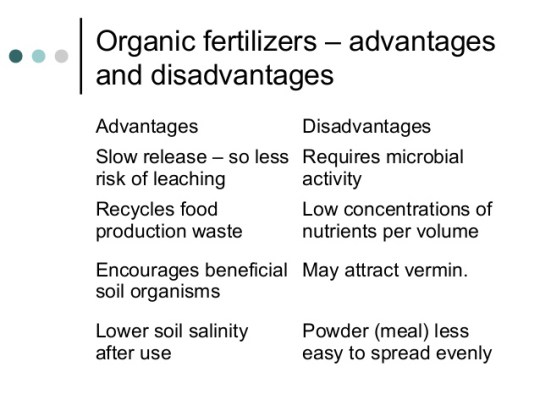

Glasshouses and Polythene tunnels: Grade 9 understanding for IGCSE Biology 5.1 5.2
Growing crop plants is basically a section about maximising rates of photosynthesis. If a plant is photosynthesising at the fastest rate, it will be growing fast thus increasing the rate of food production.
One of the simplest ways of maximising photosynthetic rates is to grow crops in a greenhouse (laughably called a glasshouse in the syllabus to avoid confusing you) or a polytunnel. Greenhouses are made of glass; polytunnels are much cheaper to build as they are made of transparent plastic.
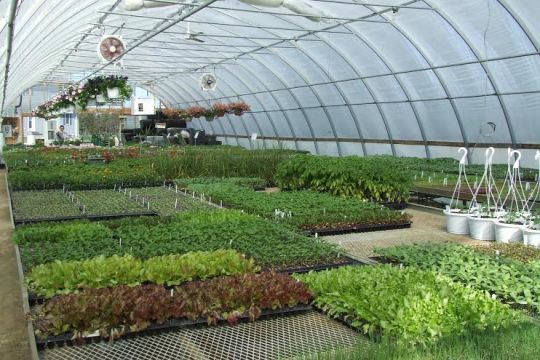
What are the advantages of growing crops in a greenhouse or polytunnel?
Temperatures are increased due to the insulating effects of the glass or plastic.
Watering can be controlled. Artificial lighting can be used to optimise the light intensity for a maximum photosynthetic rate.
Carbon dioxide concentrations in the air can be artificially increased if the doors to the greenhouse are kept closed. Often carbon dioxide is released into the greenhouse – this is good for the environment as it reduces emission of greenhouse gases and good for the farmer as crop yields increase.
These points above link into the work you will have done on rates of photosynthesis. (For more information on this, please refer to my posts on section 2.19)
Fertilisers can be added to the soil (see posts on section 2.21 and 5.3).
Pests can easily be kept out or removed (see posts on section 5.4)

Fish Farming: Grade 9 Understanding for IGCSE Biology 5.9B
5.9B explain the methods which are used to farm large numbers of fish to provide a source of protein, including maintenance of water quality, control of intraspecific and interspecific predation, control of disease, removal of waste products, quality and frequency of feeding and the use of selective breeding.
 Before we start it is worth me being completely clear – I hate the topic of fish farming. I am not saying it isn’t important, just that when you read the specification point above, it hardly lifts your spirits does it? Perhaps this is why I have waited until the evening before the 2016 paper 2 exam before writing about it on the blog.
Before we start it is worth me being completely clear – I hate the topic of fish farming. I am not saying it isn’t important, just that when you read the specification point above, it hardly lifts your spirits does it? Perhaps this is why I have waited until the evening before the 2016 paper 2 exam before writing about it on the blog.
Background understanding needed:
Humans have overfished all the world’s oceans over the past 20-30 years. This means that fishermen have become so successful at collecting fish from the oceans due to advances in trawling technology and echolocation, that fish populations have crashed. It is a truly sobering thought that almost every studied fish species in the ocean has only 10% of the numbers that we know were present 50 years ago. 90% of all fish have been removed by fishing.
http://www.theguardian.com/environment/2011/feb/18/end-line-film-fish
Fish provide the major source of dietary protein for a large proportion of the world’s population. When you combine this with the fact that fish are becoming so scarce in the ocean, it is getting harder and harder to catch them, it is clear we have a potential problem on our hands. Farming fish rather than catching wild fish might (stress might) provide a possible solution…..
Fish Farming
Farming fish is really as dull as it sounds. Large floating cages are anchored often in estuary waters and small fish are added. They are fed regularly (with fish food made from other less tasty fish that humans are extracting from the ocean), predators are kept out by the clever use of nets and fine mesh cage, antibiotics and other chemicals added to control lice and bacterial pathogens and after a few months, the fish can be harvested.
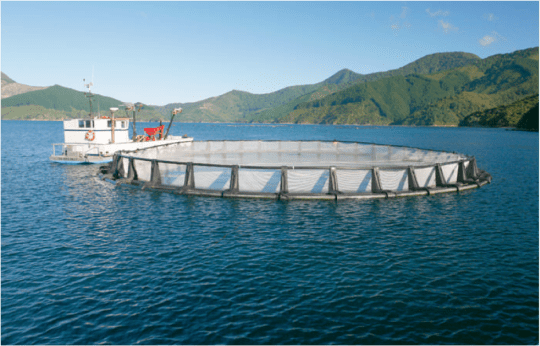
Maintenance of Water Quality
If the fish farm is in a tidal part of an estuary, then the tide will twice a day replace the water in the cage with fresh seawater containing high concentrations of oxygen for respiration in the fish.
Control of Intraspecific and Interspecific Predation
Intraspecific predation means predation within a species. This means the fish will eat each other…. This is prevented by only having fish of the same age in any particular cage. There won’t be any bigger fish to eat the smaller ones. Interspecific predation means other species eating your precious fish. This is prevented by keeping predators out of the cage using a mesh size that doesn’t let predatory fish and seals in plus covering your cage with netting to deter sea birds.
Control of Disease
The density of fish living in the cage will be much higher than would ever occur in the wild. This means the conditions are perfect for fish parasites such as lice to spread. This is controlled by adding toxic chemicals to the water. Bacterial pathogens too can be a problem in which case antibiotics would be added to the fish food.
Removal of Waste Products
(See tidal solution above)
Quality and frequency of feeding
The farmed fish need to be fed a diet that is rich in protein for growth. Obviously the frequency of feeding is important: too often and food will not all be eaten and will leak out into surrounding waters, too rarely and the fish will grow too slowly.
Use of Selective Breeding
The characteristics a fish farmer wants in his fish are very different from those that might be selected for in a wild population. For this reason, selective breeding might have to be used to produce fish that have the desired characteristics. These might include an ability to grow rapidly when fed on a cheap diet of fish pellets and to produce tasty and attractive meat, a resistance to lice and other parasites, a willingness to grow even when swimming opportunities are rather limited, a friendly disposition so thousands can live happily crammed into a single cage etc.
I have written this post in a bit of a rush the night before the exam. So there may be things I have left out, but at least I have given you something to read to help you sleep the night before the exam! Good luck.

Transgenic Organisms timeline
This is a great website for extra reading about transgenic organisms.
Cloning in Mammals: Grade 9 Understanding for IGCSE Biology 5.19B 5.20B
The most famous sheep in the world currently resides in a display cabinet at the National Museum of Scotland. Dolly became internationally famous in 1996 as the first animal cloned using a nucleus from an adult animal. Cloning experiments had been going on since the 1950s but previous to Dolly only embryonic cells could be used as the source of the donor DNA.
So how was Dolly the sheep made? She was a clone of an adult sheep and because the cell used to provide the nucleus from this adult donor was from an udder cell, the researchers decided to call her Dolly after the American singer Dolly Parton. (No further explanation required but the photo of Dolly Parton below might give you a clue….)
The technique used to make Dolly was given the catchy title somatic cell nuclear transfer. A nucleus was taken from an adult cell in the udder (somatic cells are any cells whose DNA will not be inherited to the next generation) and this was fused with an enucleated egg cell (an egg cell which has had its nucleus removed). This cell contains the nuclear DNA from the adult donor but will divide and develop into an embryo. The embryo can then be implanted into the uterus of a surrogate sheep for it to complete its development.
You can see that three sheep (all female in this instance) were used to produce Dolly. The tissue cell donor provided the udder cell and all the nuclear DNA for the cloned sheep. A second sheep provided the egg cell which was then enucleated. And finally a third sheep acted as a surrogate mother and so provided the uterus in which Dolly would develop to birth. The researchers cleverly used three breeds of sheep so they could check that the various processes all worked correctly.
Potential Applications of Cloned transgenic animals
If researchers combine this “Dolly technology” with the ability to genetically modify the embryonic cells produced, then it will be possible in the future to produce cloned transgenic animals. A transgenic organism is one that contains DNA from more than one species.
One potential application is that cloned animals could be genetically-modified to produce human antibodies. These polyclonal antibodies are useful in treating various medical conditions (see the New Scientist article below)
https://www.newscientist.com/article/dn2658-cloned-cows-produce-human-antibodies/
A second potential application could be to use cloned animals that have been genetically modified as potential donors for medical organ transplantation in humans. You all know that in most developed countries there is a shortage of organs for transplants to patients who need them. Added to this is the fact that the recipient’s immune system will recognise the donated organ as ‘foreign’ and so mount an immune response against it. This rejection can be combatted with immunosuppressant drugs but these have nasty side effects. Imagine if a replacement organ could be grown in a cloned animal for you, and this organ could express your own surface protein markers on its cell membranes. No problem with shortage of donors, no problems of rejection! Pigs are being used in research at the moment as pig abdominal organs are very similar in size to humans…. Here is a newspaper article looking at another possible way cloning technology could be applied to organ transplantation.

Micropropagation in Plants: Grade 9 understanding for iGCSE Biology 5.17B 5.18B
Cloning is the process of producing many genetically identical organisms. I am going to write two posts on cloning: this one on cloning plants and then later, a second post on cloning animals. As this blog grows to cover the entire iGCSE specification, it does mean that I will have to blog on some of the less exciting (to me at least) topics in Biology. Micropropagation of plants does not get to me in the same way as other topics, so I apolgise in advance if this post is rather dull……
Cloning in Plants
Plants are relatively straightforward to clone, at least compared to animals. Their bodies are made of fewer tissues and the genetic developmental program in plants is simple enough that many cells retain their totipotency into maturity. The process of micropropagation, also known as tissue culture, is the main mechanism for cloning a plant. Small samples from an adult plant are cut out. These tiny explants can be sterilised in dilute bleach to kill surface bacteria and fungi, then grown in a suitable culture medium. The explants divide by mitosis and grow but if the chemicals in the growth medium are correct, they will also start to differentiate into roots, shoots and leaves.
The experiment that you will have done on this in school involves cloning cauliflower plants. A cauliflower can be divided up into many thousands of explants and these are cultured on Murashiga and Skoog growth medium. This M&S medium contains the minerals, sugars and amino acids needed to grow but it also contains plant growth substances such as auxins and cytokinins. These growth substances can switch on root and leaf development and so rather than just producing a larger ball of cells called a callus, the explants will develop roots and shoots so they can be planted into compost. Seeing as the only cell division in this whole process is mitosis, the plantlets will all form a clone of the original parent plant.
In practice what tends to happen in these experiments is that the surface sterilisation does not work fully and so students end up growing a boiling tube full of bacteria and fungi.
Micropropagation does have commercial applications as it can produce large quantities of genetically identical plants. This allows the plant breeder to produce plants all year round without needing pollinating insects. The breeder can also guarantee the exact genetic make up of every plant as they are all a clone. Sexual reproduction of course introduces genetic variation into the offspring and although this might be advantageous to plants in the wild, for a plant breeder it is unwelcome as many of the offspring may not grow as well or be as tasty to eat as their parent. So if she starts with a plant with desirable features (good tasting fruit/disease resistance/easy to grow etc.) then every single plant in the clone will have the same desirable characteristics. Banana plants can be produced commercially by micropropagation.
If you find micropropagation interesting, you are a better biologist than me. But I hope this post proves useful if not entertaining….

Biological Control of Pests: Grade 9 Understanding for IGCSE 5.4
Pests are species that lower the yield of crop and that need to be controlled. They might be competitor plants (weeds) that grow in the field or greenhouse, taking vital minerals from the soil and using sunlight that might be available to the crop plant. Pests may be insects that feed on the crop plant such as aphids or caterpillars.
Farmers can control pests in two ways; chemical pesticides are toxic chemicals that kill the pest species and there is also biological control.
Chemical pesticides have two significant disadvantages. Firstly if the pesticide is persistent (DDT is a good example of this) it will not be broken down in the ecosystem and so will pass up the food chain. This leads to the pesticide occurring in a much higher concentration in the cells of animals at the top of the food chain and it can cause unexpected and catastrophic effects. DDT made the egg shells of the birds of prey much more fragile so chicks were hatched very prematurely and populations of eagles and falcons were decimated. This process is called Bioaccumulation.
Can you think why the concentration of the pesticide in the cells of the animals should increase as it moves up the food chain?
The second problem of chemical pesticides is that the pest species quickly develops a resistance to the chemical through natural selection. The pest can pass its resistance onto its offspring, and so the pest species gradually evolves to become more and more resistant to the pesticide. This means the farmer has to use more and more of the pesticide for less and less effect. In every generation the most resistant organisms survive to breed.
Biological Pest Control introduces a different species into the ecosystem that either predates or causes disease in the pest.
The control organism reduces but does not completely eliminate the pest species. It does take the pest population lower than the EIL (economic injury level) and so at these small populations, the presence of the pest does not damage the farmer’s yield.
Advantages and disadvantages of biological control.
Claimed advantages are
1. Selectivity, it does not intensify or create new pest problems.
2. No manufacturing of new chemicals, the organisms are already available.
3. Control organisms will increase in number and spread.
4. The pest is unable (or very slow) to develop a resistance.
5. Control is self perpetuating as the control organism will itself breed.
Disadvantages
1. Control is slow.
2. It will not exterminate the pest.
3. It is often unpredictable.
4. It is difficult and expensive to develop and supply.
5. It requires expert supervision.
A good example of biological pest control might be the use of ladybirds in a greenhouse to reduce the numbers of whitefly, an aphid that feeds on the crop plant. Ladybirds eat the aphids and so reduce their population below the EIL. In a greenhouse, the control agents (ladybirds) cannot really escape into the wild and cause environmental damage and so the risk of the procedure is low. Sadly there are many examples from all over the world of a non-native control species being introduced to act against a specific pest and the biological control agent causing more harm than good through unpredictable behaviour in the new ecosystem. Biological control needs careful monitoring and detailed research in advance of the introduction of the new species.

Genetically Modified Plants: Grade 9 Understanding for IGCSE Biology 5.15 5.16
You should understand how bacteria can be genetically modified to produce useful proteins (e.g.human insulin, human growth hormone, vaccine antigens etc.) – see previous post if you are unsure. In this post, I will try to explain how transgenic plants can be made and indeed what kind of genes might be added to plants to benefit humans. Genetically modifying a plant will be a more complex process since plants are multicellular and so many millions of cells need to be genetically altered.
Luckily a vector exists that can transfer genes into many varieties of plant. Agrobacterium tumefaciens is a species of bacterium that contains a plasmid that can be transferred into plant cells. This plasmid (called the Ti plasmid) can be cut open with a restriction enzyme and a new gene inserted with DNA ligase.
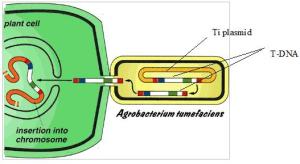
The Agrobacterium that have been genetically modified will then infect the plant tissue and then when this plant tissue is cultivated using the micropropagation techniques you learned about with cauliflower, a whole GM plant can be produced.
Genes can also be inserted into plants by a gene gun. A gene gun literally fires “bullets” made of tiny particles of gold that have been coated with the required DNA and while Agrobacterium does not infect all species of plant, the gene gun can work to get foreign DNA into any plant species.
What are the potential advantages of GM crops?
Resistance to Herbicide: some crop plants have been altered so they contain a gene that makes them resistant to a particular herbicide. This means a farmer can spray the herbicide on his crop without risk of harming the crop plant.
Resistance to Frost: some GM plants have a gene from a species of Arctic fish that codes for an “antifreeze” chemical in the fish blood. Plants that contain this gene will be frost-resistant and so produce can be transported in refrigerated containers without damaging the plant cells.
Golden Rice: rice plants have been altered so they contain genes that make the molecule beta-carotene. This is the orange pigment found in carrots and is a precursor for making vitamin A. So in populations who rely on rice as a staple component of their diet, the rice will be more nutritious and so prevent the night-blindness associated with vitamin A deficiency.
Antibody production: plants may also be genetically modified to produce antibodies for treatment of human disease.



